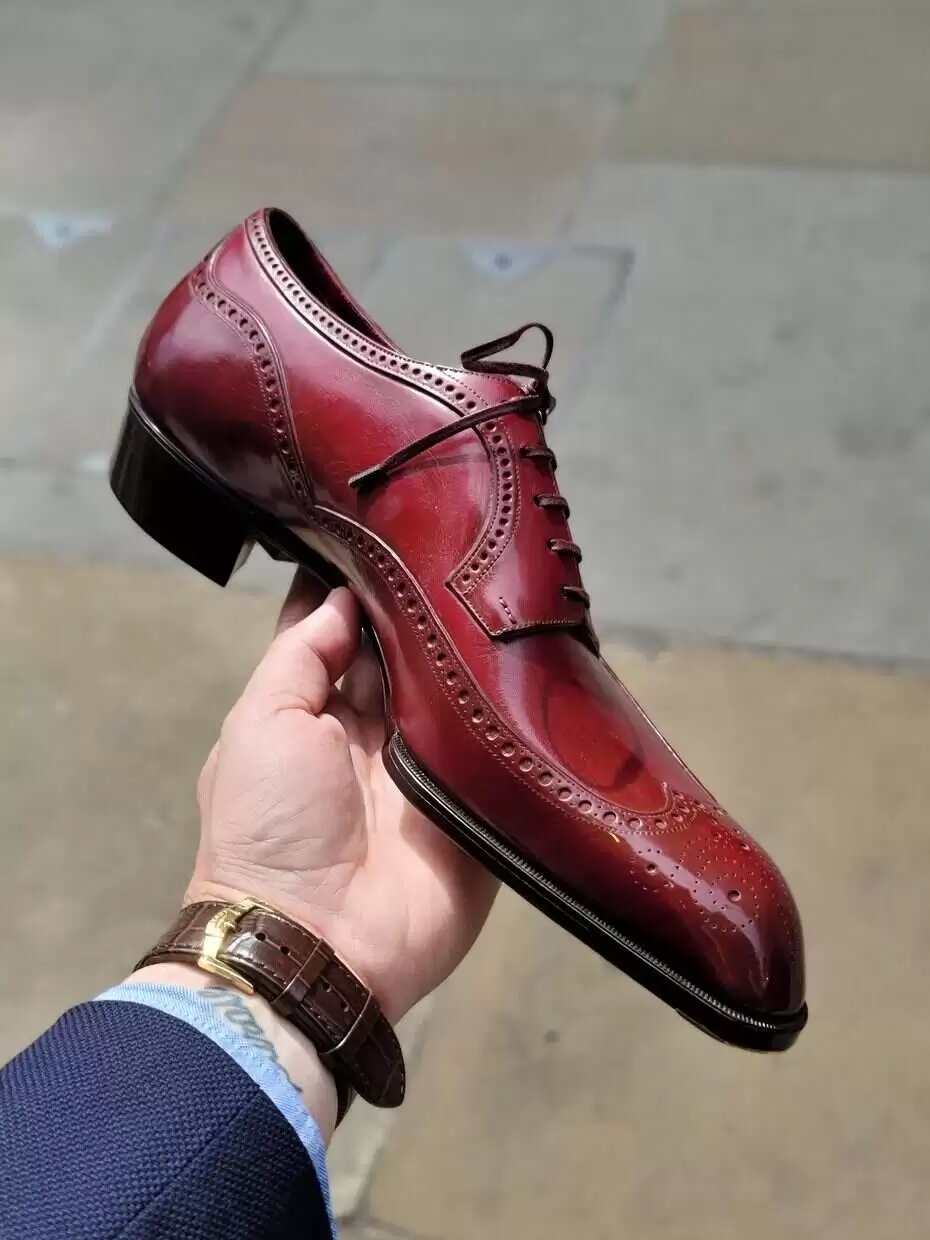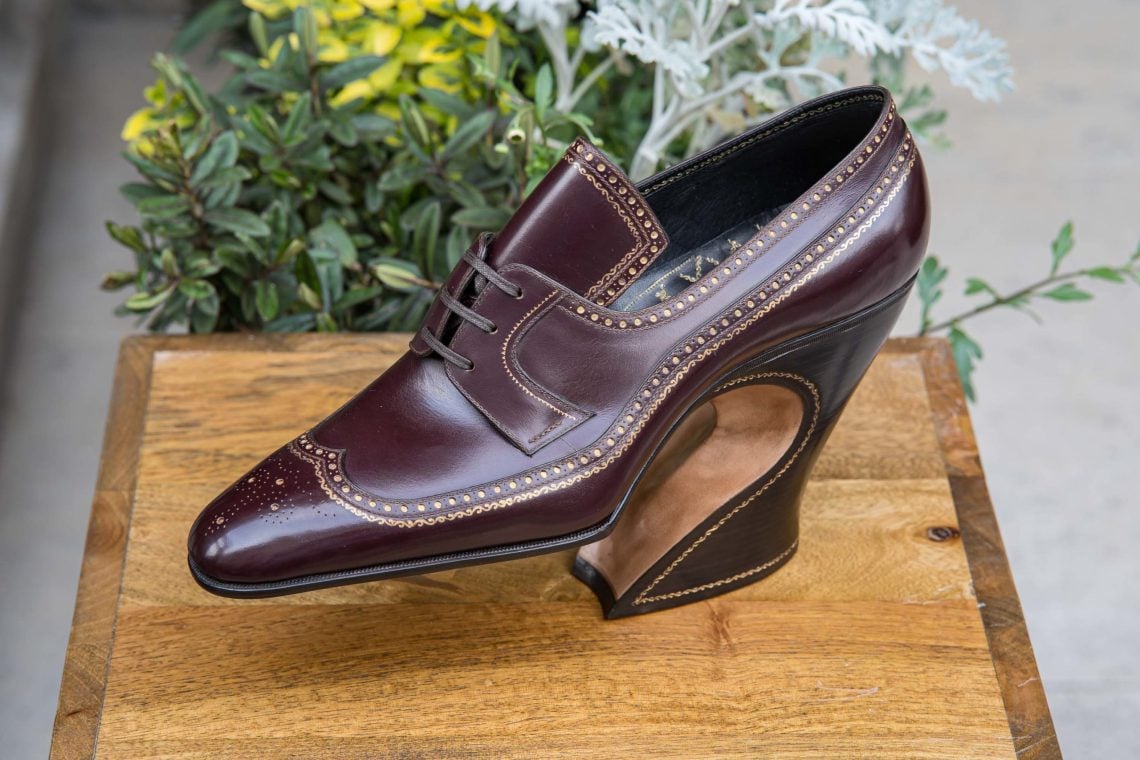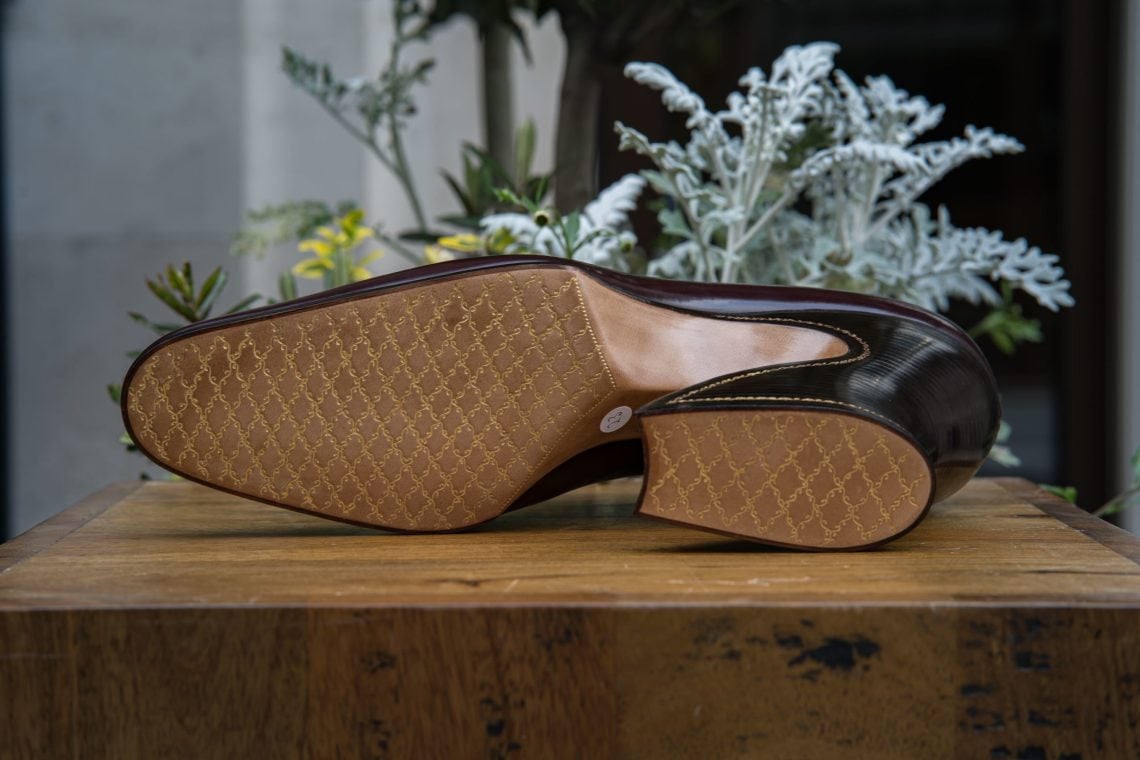
****This is the original content of my partner in the London Super Trunk Show, Jesper Ingevaldsson of Shoegazing, yet I have added my bits, which you will see in bold Italics****
Since it will take a while before I’m finished with the huge posts covering all the 30 contestant shoes of the shoemaking world champs, I always do a quick picture special showcasing the top three, to leave folks’ minds at ease a bit. Please see the amazing craftsmanship of Wataru Shimamoto (1st), Ken Kataoka (2nd), and Kenjiro Kawashima (3rd).
-Jesper does a great job at covering everything in super meticulous detail. And these posts take a lot of time to create. We all owe thanks to Jesper for his work put into this show
This past weekend we finally could host the London Super Trunk Show again, and what a day it was with almost 1,200 visitors. There will be much more on that in a large report later this week, and as mentioned above, later on, I will summarise all the 30 contest shoes for the World Championships in Shoemaking, a contest organised by Shoegazing and The Shoe Snob, in collaboration with Kirby Allison and the book Master Shoemakers. But since there is a lot of work putting those contest articles together and it will take a while, here is a look at the top trio. As I wrote ahead of the event, we had lots of makers registered, but there wasn’t more than 30 shoes that were sent in. For us organising, it was a bit of a blessing to be honest, since it made it much easier to administrate. The long wait obviously played one part in few of the registered sending in, likely many who know they wouldn’t compete for top spots have realised it’s not worth sending in shoes (since overall the level of craftsmanship was highest yet), and we also know that many makers have become so busy with work this spring that they didn’t have time to finish the shoes (the fact that bespoke customers return for real now is just great).
— We are starting to learn just how big this event is becoming with the level of craftsmanship rising year after year. Jesper only mentioned that we had 30 people send us shoes, but we had 90 register for it. If we had had 90 people actually send us shoes, it would have been chaos. Luckily, this gave us some breathing room to learn what we can expect for future years and how to better organize, as I feel that year after year this show and contest is going to exponentially grow
As always, we expect comments on wearability, I want you to note that this is not a part of the criteria (read more in the Call for competition), we only state a size EU42/UK8 in length, and that width can’t be more than two width sizes up or down from an acceptable standard width (both since it’s not important in this case, and since it’s very difficult to judge what wearable would be. For example, what type of foot would have to work in the shoe to make it called wearable? Would it be enough to be able to put on the shoe, or would one have to be able to walk in it? If the latter, would ten steps be enough to call it wearable, or how many? Etc.). For this contest, the craftsmanship of the shoemaking (not last making/fit since it’s extremely difficult to solve a contest judging fit) is in focus, along with design, and we see shoes that can be viewed more as concept cars, for example, where the maker creates a more artistic piece meant to showcase the craftsmanship achievable. We saw all types of shoes in this contest, and more artistic shoes ended up both high and low on the list, as well as more practical shoes ended up both high and low. This is the way the contest was held hundred years ago, which has been inspiring this contest, and we know that all makers whichever shoe they make learn a lot from participating in this contest, which is a great thing.
–Jesper and I actually have very different ideas with regards to this as I think that when the shoe is not wearable it makes it hard to judge the design and I hold design to a very high level as, for me, that is a huge aspect of what makes a great overall shoemaker. As someone who has actually made bespoke shoes and designs a RTW brand, I see a shoemaking contest less about the idea of ‘art for the sake of art’ but rather judging the ability to make a practical shoe as a whole. I think that it is very hard to judge shoe #1 from shoe #2 with our criteria. Shoe one is perfect in the terms of an actual shoe one could wear. Shoe 2 is perfect in execution and difficulty but how do you judge its design? In the end, I believe shoe #1 took top place because it was wearable and I believe that matters greatly. Shoe#2 was definitely harder to make, without a doubt and this is where the idea of wearability matters IMHO.
This is not to say Jesper and I are at odds. We see things differently, as most humans do, but ultimately this contest was Jesper’s idea and it will stay that way until maybe he sees differently. I think in a perfect world, we would have two contests: 1. For Exhibition Pieces and 2. For actual shoes. Maybe that will happen as we progress 🙂
So, on to the top three.
Wataru Shimamoto, 1st place
Wataru Shimamoto is based in Kamakura, Japan, where he runs his own brand Orma Shoemaker, previously he worked with Il Micio / Hidetaka Fukaya in Florence. His entry is a shoe literally made to perfection. Basically flawless execution, which was where the shoe made the most points and built the foundation of the top position. Very fine sole stitching at 20 spi (stitches per inch), superb pattern and balanced design, and great details like the asymmetric heel and the intricate metal plates. All parts were made by Wataru Shimamoto, except the metal plates which were done by Takafumi Mochizuki.
The winning shoe in all its glory. A seriously beautiful piece of footwear showcasing outstanding craftsmanship.
Sole with intricately made metal taps fitted into the leather, and with the horseshoe heel being an obvious eye-catcher.


Ken Kataoka, 2nd place
Ken Kataoka is a young Japanese maker based in Tokyo. He is one part of the duo behind the brand Siroeno Yosui. This shoe is his baby that he has spent an incredible amount of hours on. Hand braided upper stitching, lovely painted gold coloured decorations all over the shoe, the neatest of sole edges, and so on. And oh, yeah, the heel is quite spectacular and superbly well-made. The entire shoe is made by Ken Kataoka.
A seriously spectacular shoe in all ways possible, with so many fine details that you can look at it for hours.
The sole has been wheeled and gold painted with the same type of pattern as used on other parts of the shoe.
Kenjiro Kawashima, 3rd place
Kenjiro Kawashima is based in Seoul, South Korea, where he both makes shoes under his own name as well as does bespoke shoes for Norman Vilalta, with whom he trained and worked for during three years. His great shoe has some extra stunning parts that immediately catch your eye, like the reddish Norvegese stitching with storm welt creating a stair-shaped sole edge, or the handmade split and lift-stitching (I think it’s the correct term here) on the uppers. The whole shoe is made by Kenjiro Kawashima.
A longwing brogue with pondus, which despite the fact that there are a lot of things going on manages to feel incredibly balanced. Not least the upper making is masterfully done.
–Ultimately it was a great turnout of shoes. What I loved most is that you can see shoemakers getting better. There have been shoemakers that participate year after year and they constantly push themselves to do better. That, for me, is the point of all of this. We don’t strive for better within ourselves, what are we doing? And this contest helps do that, which ultimately helps to keep shoemaking alive and something that people strive for, whether to become a maker, or to become someone who can afford to buy them. It is a great event and great contest and we very much look forward to seeing what next year’s contestants bring to the table!
-Justin FitzPatrick





















Justin, it was a fantastic event and the shoes were incredible. It was also a pleasure to see you and so many other shoe folk again. Thanks for organizing it, James
Thank you James, always a pleasure to see you!
The first place shoe is impressive – but I don’t think I’d want metal taps on the heel – seems like a dangerous feature.
Taps on the heel is a no-go for practicality but this is all for showmanship/craftsmanship 😉